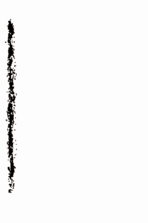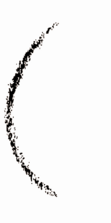You will learn to calculate, too!
The first lesson at school – it only happens once in a lifetime. In this extract from Rudolf Steiner's lecture series «Practical Course for Teachers», you can read what teachers should look out for on this special day.
«You must look on the first school-lesson which you take with your pupils in every class as a lesson of outstanding significance. The influence of this first school-lesson will be far more important in one connection than that of all the other lessons. But the other lessons, too, will have to be employed to make the potential influence of the first lesson fruitful for the whole course of teaching.
Let us imagine, without more delay, in concrete terms, how – as you will soon be in a position to become familiar with children coming from all quarters of education, and mis-education, too – we are going to arrange the first school-lesson. Of course here I can only give you general suggestions which you will be able to develop further. The point is that you will not have to act in accordance with certain principles of education which have arisen lately, but you will have to aim at things of real value for the child's development.
You have, then, a group in front of you, of various children. The first thing will be to draw the attention of the children to the reason why they are really there. It is extremely important to address the children somewhat in this way: 'So now you have come to school, and I shall tell you why you have come to school.' And now this act of coming to school must be consciously appreciated. 'You have come to school because you have to learn something in school. To-day you have no idea of all that you are to learn in school, but you will have to learn very many things here.
Why will you have to learn very many things in school? Well, you have already met grown-ups, the big people, and you will have seen that they can do something which you cannot. And you are here so that one day you too will be able to do what the big people can do. Some day you will be able to do what you cannot do yet.' To give the children this complex of idea is extremely important. But this deep-seated idea has still another consequence.
No teaching proceeds in the right course unless it is accompanied by a certain reverence for the previous generation. However much this shade of feeling must remain a nuance of feeling and sentiment, it must nevertheless be cultivated in the children by all possible means: the child must look up with reverence, with respect, to what the older generations have already achieved and what he is to achieve, too, through the school. This looking with a certain respect to the surrounding culture must be inspired in the child from the very first, so that he really sees almost a kind of higher being in the people who have already grown older. Without awakening this sense in teaching and education one cannot get on. But neither can one get on without raising to the level of the soul's consciousness the ideals that are to be realized. Proceed to reflect with the child, then, in the following way, quite without hesitation at the fact that you are, in so doing, looking beyond the child's horizon. It does not matter, you see, if you say a great deal to the child which he will only understand later.
The principle that you should only teach the child what he already understands, what he can already form an opinion on, is the principle which has ruined so much in our culture. A very famous educator of a still more famous personality of to-day once boasted that he had educated this person on this principle: he said: 'I have educated this young man well, for I have made him form an immediate opinion on everything.' (...) You see from this that examples are plentiful among present-day educationists, of how not to behave, for this kind of educating conceals a great tragedy, and this tragedy again is connected with the present world catastrophe.
The point, then, is not that the child should at once form an opinion on everything imaginable, but that between the seventh and fifteenth year he absorbs what he is to absorb, from love for his teacher, from a sense of his authority. Accordingly you must try to continue the already suggested conversation with the child, enlarging on it in the way which best suits you: 'Look how grown-ups have books and can read. You cannot read yet, but you will learn to read, and when you have learnt to read you will be able, one day, too, to handle books and to learn from them what the grown-ups learn from these books. Grown-ups can write letters to each other, too; in fact, they can write about all the things in the world. You also will be able to write letters later, for besides learning to read you will learn to write. And besides being able to read and write, the grownups can calculate. You do not know at all yet what calculating is. But you have to be able to calculate in life, when, for instance, you want to buy something to eat, or when you want to buy clothes or make clothes.' We must talk like this to the child, and then tell him: 'You will learn to calculate, too.'
It is a good thing to draw the child's attention to this fact, and then perhaps, even the next day, to redirect his attention to it, so that we take it through with the child, like other things, by frequent repetition. It is important, then, to make the child fully conscious of what he is doing.
Altogether it is most important for teaching and for education to see that the consciousness – if I may put it like this – is consciously awakened to what otherwise goes on in life through force of habit.
On the other hand, it is of no benefit to teaching or to education to introduce all kinds of tricks into teaching, merely for the sake of the 'aim' or only the ostensible aim, of the lesson. You find it suggested to-day that the child should come to school equipped with a box of burnt matches, and with these burnt matches—preferably not round, but square, so as not to roll off the steep benches of the school-room—he should be encouraged to make shapes. He is to be encouraged, for instance, to imitate the shapes of a house, and so on, with these matches. 'Playing with sticks' is, in fact, a favourite subject quite particularly recommended nowadays for young children. But such a practice, in the face of a real knowledge of life, is like playing at things; it is meaningless for the inner being of the individual to learn things by playing at matches. For whatever playing at matches can lead to, this can only appear to man in later life as child's play. It is unwise to introduce mere trifling into education. On the contrary it is our task to introduce real life-fullness into education; but mere playing about should have no place there. Do not, however, misunderstand me: I do not say that games should not be introduced into education, but only that a game artificially prepared for the purpose of teaching is a mistake in school. As to how games should be incorporated in teaching we shall have much to say later.
But how can we really educate the child from the first, particularly in the forming of his will?
Having thoroughly talked over what I have just explained, that is, what is suited on the one hand to awakening the child's consciousness to the reason for his coming to school, and on the other hand to his developing a certain reverence, a certain respect, for the grown-up, it is important to pass on to something else. It is well to say to him at this point, for instance, 'Look at yourself, now. You have two hands, a left hand and a right hand. You have these hands to work with; you can do all kinds of things with these hands.' That is, let us try to awaken the child's consciousness to the nature of man. The child must not only know that he has hands, but he must be conscious that he has hands. Of course you will probably say here: 'Obviously he is conscious of having hands.' But there is a difference if while knowing he has hands to work with this thought has never crossed his soul. When you have talked with the child for a time about hands and about working with hands, go on to let him make something or other requiring manual skill. This can sometimes be done in the first lesson. You can say to him: 'Watch me do this.' (You draw a straight line, Fig. 1.) 'Now do it with your own hand.' Now you can let the children do the same, as slowly as possible, for it will naturally be a slow process if you are going to call the children out one by one and let them do


it on the board and then go back to their places. The right assimilation of teaching in this case is of the greatest importance. After this you can say to the child: 'Now I am making this (Fig. 2); now do the same with your hand.' Now each child does this too. When this is finished you say to them: 'This line (Fig. 1) is a straight line, and the other (Fig. 2) is a curved line; so now with your hands you have made a straight and a curved line.' You help the children who are clumsy with their hands, but be careful to see that each child from the first performs his task with a certain perfection.
In this way, then, see that you let the children do something by themselves from the first, and see, further, that a performance of this kind is repeated as revision in the following lessons. In the next lesson, then, have a straight line made, then a curved line. Here a subtle distinction comes into play. The greatest value must not first of all be attached to whether the children can make a straight and a curved line from memory. But the second time, as before, you yourself show on the board how a straight line is drawn and let the children make it after you, and the curved line in the same way. But then you must ask: 'Peter, what is that?' 'A straight line.' 'John, what is that?' 'A curved line.' You ought to utilize the principle of repetition by letting the child imitate the drawing and, in refraining from telling him what he is doing, let the child say it himself. It is very important to make this fine distinction. You must attach importance to do habitually the proper thing in front of the children, taking your educational impulses right into your own personal habits.»
This text is an extract from the series of lectures «Practical Course for Teachers» given by Rudolf Steiner on the occasion of the founding of the Waldorf School in Stuttgart in 1919. You will find the whole text in the fourth lecture of GA 294.